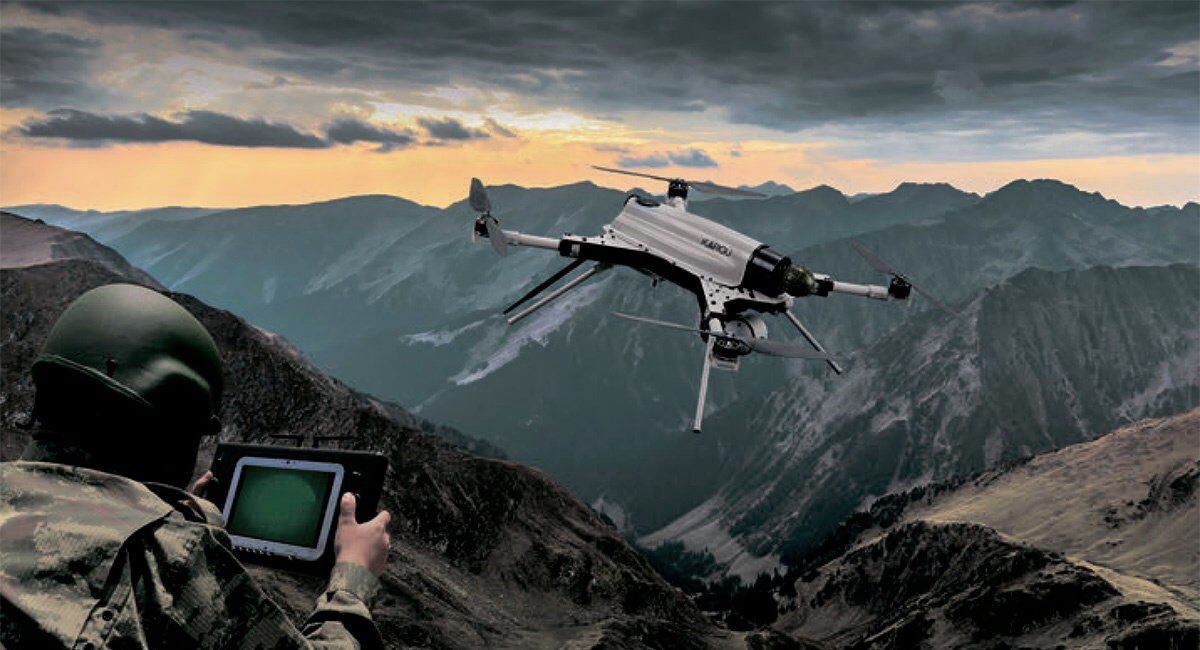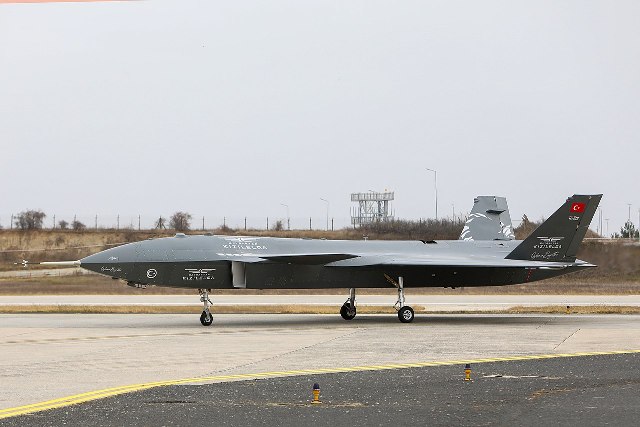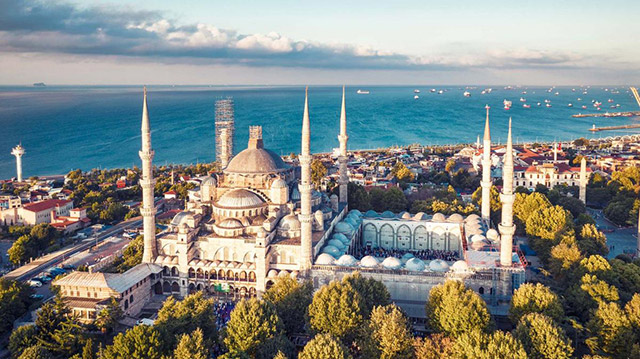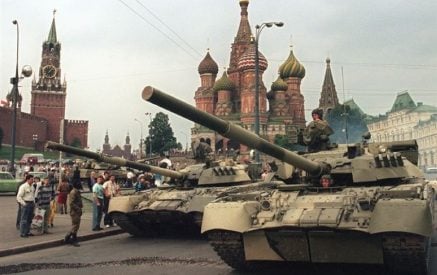Yeghia Tashjian
Back in July, Rich Outzen published a policy paper “Deals, Drones and National Will: The New Era in Turkish Power Projection” in the Washington Institute for Near East Policy highlighting the new strategy of the Turkish Armed Forces, the development of the arms industry and how Ankara is deploying hard power in the region.
According to Outzen, the integration of drones, electronic warfare, maneuver and precision strike employed by Turkey across technologies and domains (manned/unmanned and ground/air/naval) have been characterized as a new phase of a revolution in military affairs (RMA). An RMA is a hypothesis in military theory about the future of warfare, often connected to technological and organizational recommendations for radical military reform. An RMA occurs when new tactics, technologies and operational concepts enable dramatic increases in ineffectiveness to provide early innovators a marked advantage and force others to adopt the same methods.
Read also
On July 15, 2018, Turkish President Recep Tayyip Erdogan issued a decree reforming the army and its structure. One of the main tasks of this reform was to convert several mechanized infantry units to commando brigades, with the number of such brigades rising from five in 2002 to 12 in 2015 and 16 in 2018. The main duty of these forces was to conduct special operations and to be trained on new advanced weapons and doctrines.
These reforms and the deployment of advanced equipment were tested on the ground and paved the way for Turkey to employ hard power in managing regional affairs and changing the balance of power to its advantage in some countries.
On February 27, 2020, Turkey clashed with the Syrian army and its allies in Idlib, where Turkish drones destroyed Russian-made Syrian defense systems, either preemptively or when activated, enabling further drone strikes and destroying Syrian tanks and infantry. The Turks showed off their first “drone blitz.” From April to June 2020, different Libyan factions clashed while Russia and Turkey took opposite sides.
As Russia’s allies led by General Khalifa Haftar were advancing on Libya’s capital Tripoli, Turkish forces deployed the homemade Bayraktar drones and halted the advancement, hence changing the balance of power on the ground and renewing the terms of the negotiations. On September 27, 2020, Azerbaijan launched a full-scale invasion on Armenian troops in Artsakh. The first week was decisive as Azerbaijan incorporated equipment and tactics used by Turkey in Syria and engaged in drone attacks against Armenian air defenses, tanks and troop concentration, thus demoralizing the Armenian army and forcing the Armenian government to accept a Russian-brokered ceasefire. Finally, starting January 2020, Turkish forces conducted drone attacks against Kurdish PKK fighters stationed in the Northern Iraqi mountains. Dozens of PKK bases were destroyed.
The central logic driving Turkey’s regional assertiveness is encapsulated in the expression that Turkey is no more a tool of great powers, but a player that upends and resets key events. This phrase, argues Outze, captures a strategic narrative that foreign powers are playing geopolitical games in and near Turkey, that Turkey will not fall for them, and that Turkey has its ways to maneuver and the national will to change the dynamics and establish new “games” on terms favorable to its interests.
Diplomacy, Intelligence and Hard Power
Turkish strategic and military culture is geopolitically oriented and has a long historical memory and an extreme trust deficit. The main concern that drives Turkish elites and popular foreign policy discourse is generally derived from geopolitical premises, such as the Sèvres Syndrome, which refers to a popular belief in Turkey that some outside forces, especially in the west, are conspiring to weaken and carve up the country. This popular belief has been translated into a strategic discourse that often is being used by ruling elites to mobilize the masses and engage in external wars.
In the last decade, Turkey expanded its diplomatic missions all over the world, mainly targeting Africa, central and southeast Asia and South America. The expansion required a 30-percent increase in real terms for the Ministry of Foreign Affairs budget but yielded even greater increases in bilateral trade. After years of expansion, by 2019 Turkey had deployed the sixth-largest diplomatic network in the world.
This has helped Turkey’s National Intelligence Organization (MIT) to become a global intelligence power. MIT was useful in gathering information around the globe on anti-Turkish activities and advancing Turkish soft and hard power in the region. According to the pro-government newspaper Daily Sabah, quoting MIT head Hakan Fidan, the organization has increased its foreign intelligence activities in 2020. The report stated: “Our organization has shouldered active duties in accordance with our country’s interests in conflict zones, increased foreign intelligence activities, carried the fight against terrorism to an international dimension and uncovered intelligence activities that targeted our country and have made technical intelligence part of its works’ main component.”
Hence, Turkey’s power projection no longer depends on its soft power, but hard power. Ankara’s hard power projection depends on basing, overflight, military exercises, intelligence sharing, military coordination programs, defense-industrial cooperation and more. Such coordination begins with diplomatic representation in a country. In Africa, Turkey increased its number of embassies from 12 in 2003 to 42 by 2020, accompanied by increased direct flights, aid projects and trade agreements. Today, Turkey maintains a military presence (sometimes illegally through occupation) in Cyprus, Iraq, Syria, Libya, Azerbaijan, Somalia, Afghanistan and Qatar. It has military agreements with Ukraine, Pakistan, Albania, the United Kingdom, Uzbekistan, Malaysia, and Sub-Saharan African countries. This has all pushed Turkey to invest in its military industry and export weapons to key partners.
Turkey’s Growing Arms Industry
Drones have existed for more than four decades, but applying them for a wide-area strike while simultaneously using them to locate targets for cannon and rocket artillery was entirely new. In his 2021 book Drone Wars: Pioneers, Killing Machines, Artificial Intelligence, and the Battle for the Future, Seth J. Frantzman believes that drones have become a game-changer, and they can give poor countries an instant air force. That is why third-world countries are keen on purchasing drones rather than more expensive fighters or bombers. Drones also enable powerful countries not to put boots on the ground to avoid casualties. Finally, most soldiers can learn to fly a sophisticated drone the way they play a video game because drones do so much of the work autonomously.
US refusal to sell MQ-1 Predator and MQ-9 Reaper drones to Turkey in the first decade of the current century pushed Turkey to search for alternatives. Turkey initially sought drones to enhance its border security and to conduct limited counterterrorism strikes against Kurdish guerillas, but it faced significant hurdles in technological integration, doctrine and operational coordination. To enhance its border security, Ankara bought IAI Heron and Harop drones from Israel. However, Turkey was soon disappointed as former Turkish Defense Minister Nurettin Canikli claimed, “We have never been able to effectively make use of them. We realized that we bombed rocks and most of the targets were missed.” Hence, Turkey decided to invest in its domestic drone industry.
Selçuk Bayraktar, a Turkish engineer and MIT graduate who is currently the Chief Technology Officer of Turkish high technology company Baykar, became the architect of Turkey’s first indigenous and operational UAV systems that revolutionized the Turkish air force. After marrying President Erdogan’s daughter, he had the latter’s full financial backup. His company Baykar Makina manufactured the Bayraktar TB2, which is a Turkish medium-altitude long-endurance unmanned combat aerial vehicle (UAV) capable of remotely controlled or autonomous flight operations. After its successful operations in Libya, Syria and Artsakh, countries such as Ukraine, Poland and others have raised interest and purchased these drones.
With annual global expenditures on military drones expected to approach $10 billion in the coming decade, Turkey continues to advance its drone capabilities with greater-payload/range drones (Akinci and Aksungur), sea-launched drones (Bayraktar TB3) and swarming kamikaze drones (Kargu-2 and Alpagu) fielded in 2021. The addition of drones will enhance Turkey’s capability for intelligence gathering and naval and air force attack capabilities.
Moreover, according to Outzen’s report, another critical component of this combined-arms approach is the use of electronic warfare. Turkey’s Koral system was employed in Libya to jam, deceive and paralyze Russian-made SA-22 Pantsirs, enabling the Turkish air force to destroy the Russian air defense systems. Turkey also combined its air force with its ground forces activities. Turkish tactical ballistic missiles such as the Bora (GPS guided, 280 km range, first combat use in 2019) can be targeted with the assistance of surveillance drones, whereas the TRLG-230 (laser-guided, currently in development) will be able to hone in on target designation lasers carried by drones. Turkey has homegrown artillery and rocket systems made more effective in tandem use with drones, such as the T-122 Sakarya and TRG-300 Kasirga rocket launchers and the T-155 Firtina howitzer. To safeguard its drone activities, Turkey’s defense industry is also building its defense/anti-drone tasks, including Roketsan’s ALKA energy weapon system. The Turkish government has also worked to establish the Laser Technologies Center of Excellence for this purpose.
Turkey has become the world’s twelfth largest military equipment exporter by 2019, and it’s on track to crack the top 10 in the coming decade. The Turkish defense and aerospace industry manufacturers association SASAD reports that total volume for the industry topped $10 billion for the first time in 2019, including a 40-percent increase in exports (and that was before the impact of Turkish drones in the 2020 wars). Turkey is not only exporting but also training allies on these systems as well. Training allied officers and soldiers is important for Turkey since it would have enough leverage in the future not only to integrate those armies in its defense industry but also to increase its political influence in key ally countries.
Assessment
With global and regional actors employing hard power in Turkey’s immediate neighborhood, decision-makers in Turkey realized that soon they would be left outside of the game in North Africa, the Middle East and South Caucasus. Hence, they felt a growing tendency to act and guarantee their share from the new regional arrangements. Within these arrangements, Turkey was no more a dependent actor, but a rising independent regional power that has its national interests.
Turkey’s projection of power had also a domestic legitimacy, where the majority of the people supported Turkey’s military successes abroad. Turkish drones became a sense of pride for the Turkish people. Meanwhile, Turkey’s use of proxies and mercenaries in these conflicts satisfied several operational needs. It reduced military financial costs as it reduced the risk to national forces in overseas conflicts, thus fewer casualties on the Turkish military side. It also provided an army of Turkey-loyal experienced fighters that can be deployed in any region anytime and wherever Turkey decides.
Turkey’s defense companies are expanding and growing in parallel with Turkey’s regional policy. The goal of defense companies is to be rid of foreign dependency on the Turkish defense industry by 2023, the 100th anniversary of the Turkish Republic.
Turkey under Erdogan has revolutionized its army by employing hard power to safeguard its ambitions in the region; psychologically prepared the state and the public for a showdown; coordinated between its diplomatic and intelligence networks for military operations; and integrated the defense systems of key allies with its defense industry thus winning political leverage over key allies in Africa and Caucasus. In a January 2021 article published in the Financial Times, “Erdogan’s great game: Soldiers, Spies and Turkey’s quest for power,” the author argues that Turkey’s independent and strong foreign policy, whilst staying within NATO, will remain in the coming future. Turkey has been successful, for now, in navigating between Russia and the West. Erdogan’s decision to buy an S-400 air defense system from Russia and harm its relations with its key NATO ally (the US), while at the same time expanding in Russia’s traditional zones in Ukraine, the Caucasus and Central Asia is a reflection of this successful policy.
The big question is whether Turkey will be able to balance between both sides and follow an independent foreign policy path? Until when will Turkey continue harassing Russia in the South Caucasus and beyond? Are there red lines? The more Turkey expands and employs hard power, the more it will engage in new conflicts. Turkey’s unstable financial indicators warn that the country is functioning beyond its resources and engaging in more conflicts is risky.




























































